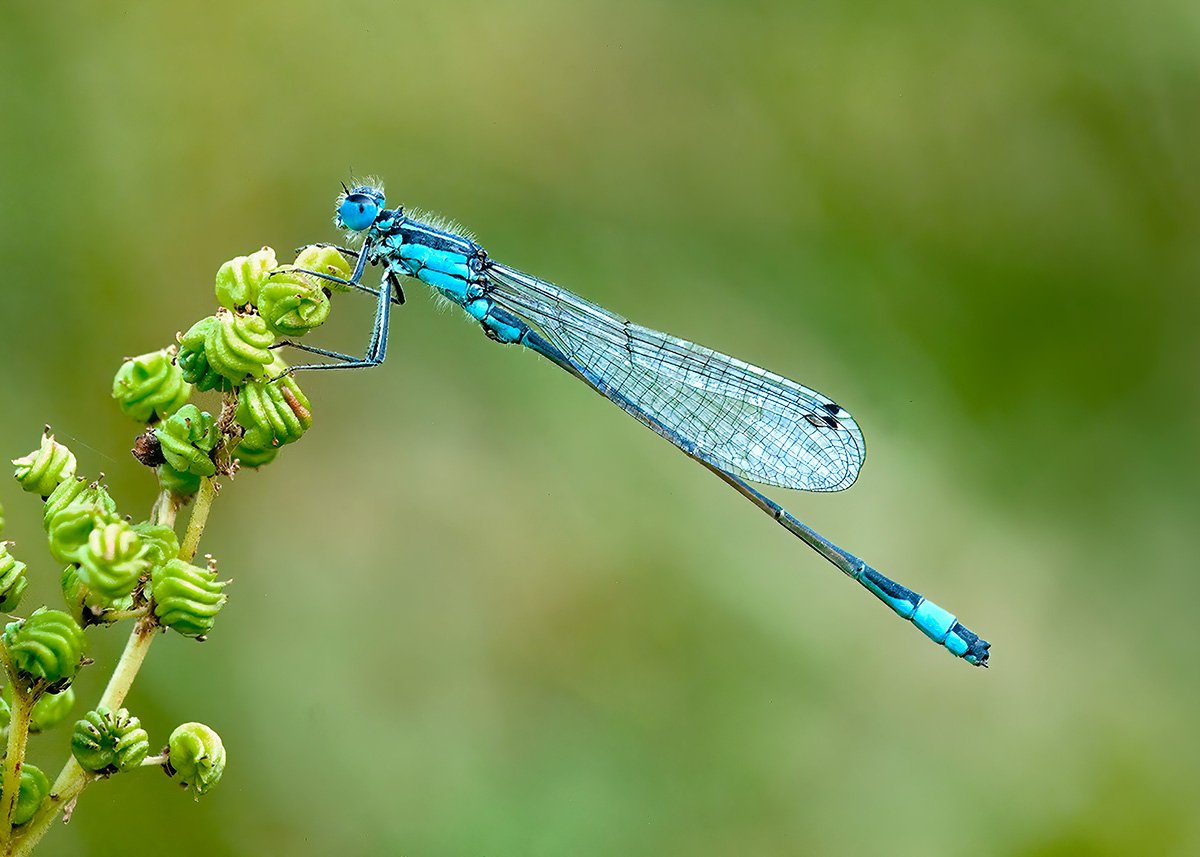 Image 1 of 1
Image 1 of 1


Bee
Bumblebees are large, furry insects belonging to the genus Bombus, within the family Apidae. Here are some key features and characteristics of bumblebees:
1. **Appearance**: Bumblebees typically have robust bodies covered in dense hair, which gives them a fuzzy appearance. They vary in size and coloration depending on the species, but common colours include black, yellow, orange, and white. Some species have distinctive bands or stripes on their abdomen.
2. **Social Structure**: Bumblebees are social insects, living in colonies typically consisting of a single queen, male drones, and female workers. The queen is the largest bee in the colony and is responsible for laying eggs. Workers are smaller females that forage for food, care for the young, and maintain the nest. Male drones mate with the queen.
3. **Lifecycle**: Bumblebees undergo complete metamorphosis, with four main life stages: egg, larva, pupa, and adult. The queen overwinters in hibernation and emerges in spring to start a new colony. She lays eggs that hatch into larvae, which are fed by the workers and develop into pupae. Adult bees emerge from the pupae and take on various roles within the colony.
4. **Habitat**: Bumblebees are found in a wide range of habitats, including meadows, grasslands, woodlands, gardens, and agricultural areas. They nest in underground burrows, abandoned rodent nests, or other sheltered locations.
5. **Pollination**: Bumblebees are important pollinators of flowering plants, including many crops and wildflowers. They visit flowers to collect nectar and pollen, transferring pollen between flowers as they forage. This pollination activity is crucial for plant reproduction and the production of fruits and seeds.
6. **Flight**: Bumblebees are strong and agile fliers, capable of hovering, flying backward, and navigating complex environments. Their large wings beat at a relatively slow and steady pace compared to other insects.
7. **Communication**: Bumblebees communicate with each other using a combination of visual signals, such as body movements and colours, and chemical signals produced by pheromones. They use these cues to coordinate foraging activities, defend the colony, and interact with other bees.
8. **Conservation**: Like many pollinators, bumblebee populations face threats from habitat loss, pesticide use, diseases, and climate change. Conservation efforts, including habitat restoration, pesticide reduction, and public awareness, are crucial for protecting bumblebee populations and maintaining healthy ecosystems.
Bumblebees play vital roles in pollination and ecosystem functioning, making them important insects to study and conserve.
Bumblebees are large, furry insects belonging to the genus Bombus, within the family Apidae. Here are some key features and characteristics of bumblebees:
1. **Appearance**: Bumblebees typically have robust bodies covered in dense hair, which gives them a fuzzy appearance. They vary in size and coloration depending on the species, but common colours include black, yellow, orange, and white. Some species have distinctive bands or stripes on their abdomen.
2. **Social Structure**: Bumblebees are social insects, living in colonies typically consisting of a single queen, male drones, and female workers. The queen is the largest bee in the colony and is responsible for laying eggs. Workers are smaller females that forage for food, care for the young, and maintain the nest. Male drones mate with the queen.
3. **Lifecycle**: Bumblebees undergo complete metamorphosis, with four main life stages: egg, larva, pupa, and adult. The queen overwinters in hibernation and emerges in spring to start a new colony. She lays eggs that hatch into larvae, which are fed by the workers and develop into pupae. Adult bees emerge from the pupae and take on various roles within the colony.
4. **Habitat**: Bumblebees are found in a wide range of habitats, including meadows, grasslands, woodlands, gardens, and agricultural areas. They nest in underground burrows, abandoned rodent nests, or other sheltered locations.
5. **Pollination**: Bumblebees are important pollinators of flowering plants, including many crops and wildflowers. They visit flowers to collect nectar and pollen, transferring pollen between flowers as they forage. This pollination activity is crucial for plant reproduction and the production of fruits and seeds.
6. **Flight**: Bumblebees are strong and agile fliers, capable of hovering, flying backward, and navigating complex environments. Their large wings beat at a relatively slow and steady pace compared to other insects.
7. **Communication**: Bumblebees communicate with each other using a combination of visual signals, such as body movements and colours, and chemical signals produced by pheromones. They use these cues to coordinate foraging activities, defend the colony, and interact with other bees.
8. **Conservation**: Like many pollinators, bumblebee populations face threats from habitat loss, pesticide use, diseases, and climate change. Conservation efforts, including habitat restoration, pesticide reduction, and public awareness, are crucial for protecting bumblebee populations and maintaining healthy ecosystems.
Bumblebees play vital roles in pollination and ecosystem functioning, making them important insects to study and conserve.
Printed on Epson Premium glossy paper using Epson UltraChrome inks, your print is guaranteed to showcase incredible quality with rich, vibrant colors. Thanks to Epson's advanced ink technology, your print will retain its stunning appearance for years to come.
Each detail of your image will be brought to life with remarkable clarity and precision, capturing the essence of the scene as if you were there in person. Whether it's the vivid hues of a sunset or the intricate details of a landscape, every aspect will be rendered with breathtaking accuracy.
Standard UK shipping is included in the price, ensuring that your print arrives safely and promptly. For customers located in the UK Highlands and Islands or overseas, please feel free to contact me for a shipping quote tailored to your location.
Experience the beauty of your favorite scenes in stunning detail with a print that exceeds expectations, made possible by Epson UltraChrome inks and premium glossy paper.





